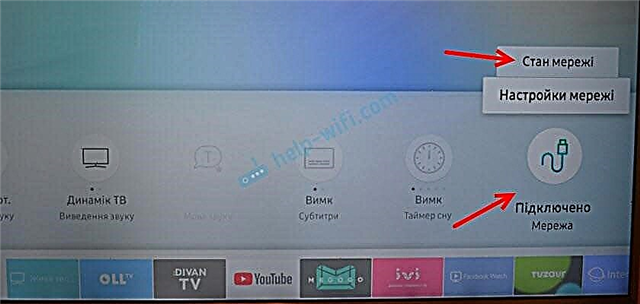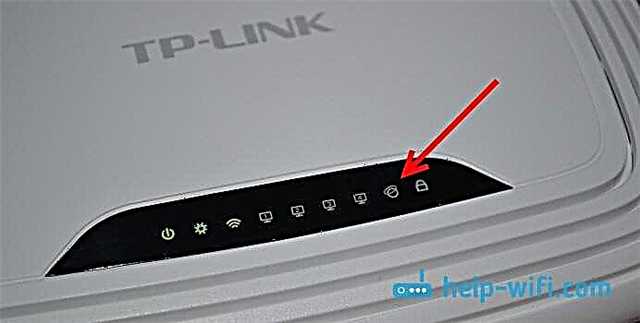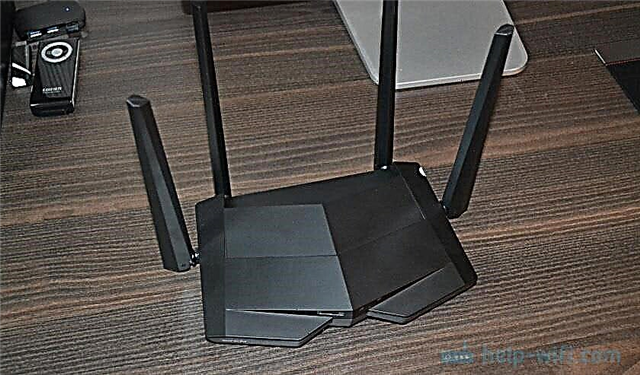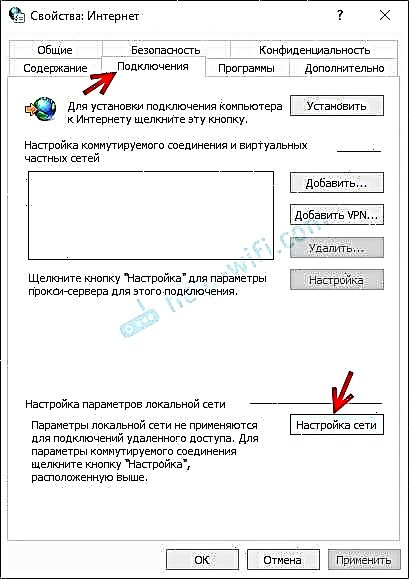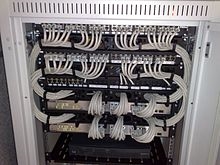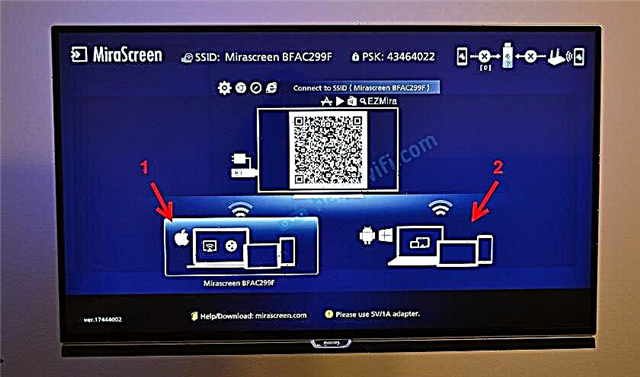If you went to this page, then most likely you already have a MiraScreen or AnyCast adapter (perhaps you have it called something else) and you want to connect your Android phone or tablet, iPhone, iPad, or computer for broadcasting the image to the TV wirelessly. If you don't understand at all what is at stake, then I recommend first reading the article Miracast, AirPlay, DLNA adapter for TV. What are MiraScreen and AnyCast? By connecting any Miracast adapter to a TV via HDMI and performing a simple setup of the adapter itself (you can do without it), we will be able to duplicate the screen of our mobile devices and even a computer on a large TV screen via Wi-Fi. The technology is Miracast (for connecting Android and Windows devices) or AirPlay (for iPhone, iPad, MacBook, iMac).
Connecting MiraScreen / AnyCast adapter to TV
If you have not yet connected your Miracast adapter to your TV, now I will quickly show you how to do this and move on to connecting devices. The adapter plugs into one of the HDMI ports on the TV. The power supply of the adapter can be connected to the USB port of the TV (if available), or to an outlet through any power adapter (preferably 5V / 1A).
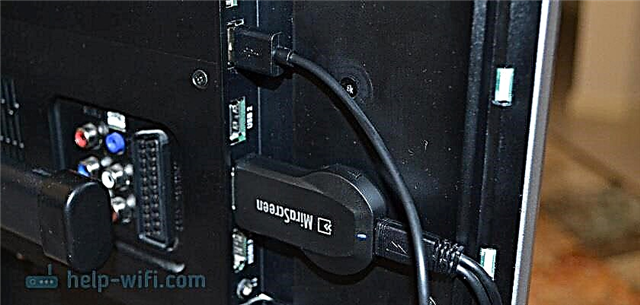
Turn on the TV (if it was turned off). If the splash screen of the adapter does not automatically appear on the TV screen, then you need to select the HDMI input to which the Miracast adapter is connected in the TV settings as a source (each HDMI port on the TV has its own number). This can usually be done through a separate menu that opens with the SOURCES or INPUT button on the TV remote control.

The desktop (if you can call it that) of our adapter should appear on the TV screen. I have MiraScreen MX Wireless Display.

Further it is desirable to configure the MiraScreen adapter. The basic setting is connecting to the router via a Wi-Fi network. This is necessary for the DLNA connection to work and the image output to the TV from iPhone, iPad and Mac OS computers (AirPlay broadcast). Here are detailed instructions for setting up: 192.168.203.1 - setting up the Miracast adapter. What to do if it does not enter the MiraScreen and AnyCast settings? Windows and Android devices connect directly to the adapter, not through a router.
Almost all of these adapters have two modes of operation:
- AirPlay and DLNA (DLNA icon and Apple logo are drawn).
- Miracast (Android and Windows logo).
The selected operating mode is highlighted on the desktop.
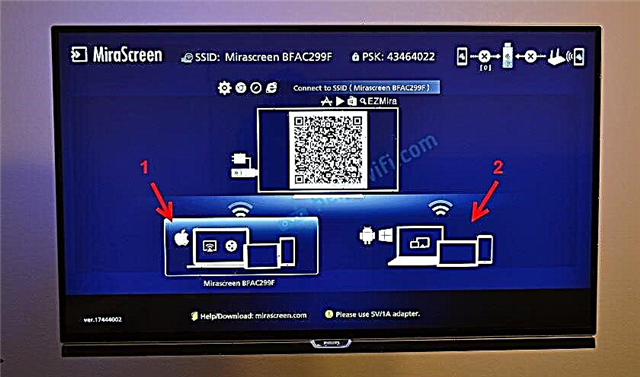
These modes are switched by pressing a single button on the adapter itself.

Or through the control panel (link to the instructions above), but the button is more convenient. We pressed the button once and the operating mode changed. We select the desired mode depending on which device we want to broadcast the image from.
IPhone and iPad screen mirroring to TV via MiraScreen adapter
Apple mobile devices and computers do not support Miracast. They have their own technology - AirPlay. At the moment, TVs do not have built-in AirPlay technology (I read that it may appear in new TVs of some manufacturers). But the Chinese somehow managed to implement AirPlay support in these MiraScreen and similar adapters.
This means that our adapter is connected, turned on and configured. It must be connected to the same Wi-Fi network as our iPhone, or another device from which we will be doing screen capture. If the adapter is not connected to the router, or there is no router, then you need to connect our iOS or Mac OS device directly to the Wi-Fi network of the adapter itself. The network name (SSID) and password (PSK) are shown on the TV screen (see photo below).
The adapter must be switched to AirPlay mode (where the Apple icon is). I showed above how to connect, configure and switch the mode.

On an iPhone or iPad, open the control center and select "Screen Repeat". If everything is connected correctly, then our MiraScreen prefix should be displayed in the list of available devices. We just choose it.
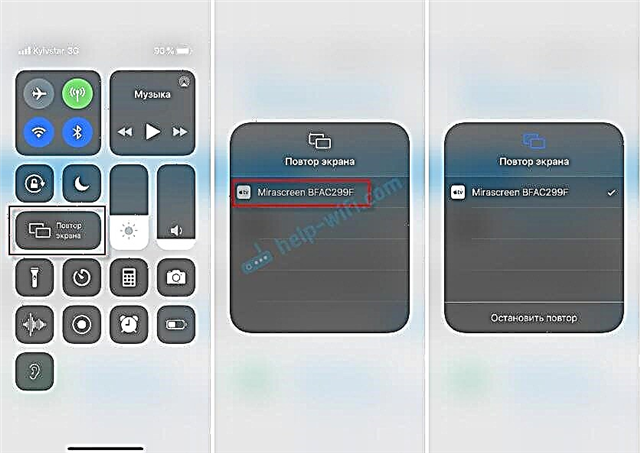
After a few seconds, the iPhone or iPad screen will be mirrored to the TV screen.
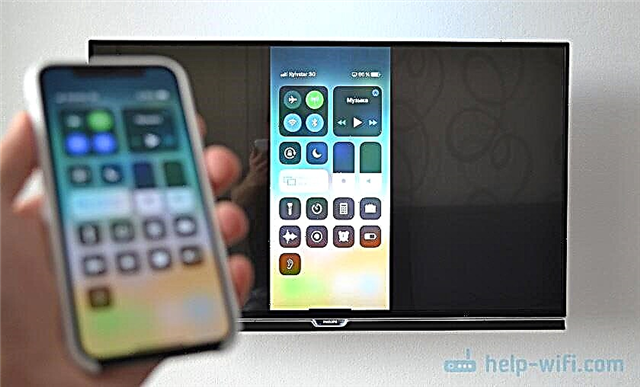
In horizontal mode, everything works too.
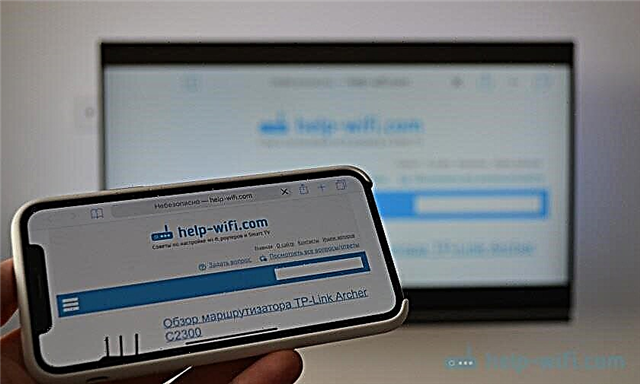
You can also, for example, open a photo or video on the iPhone, click on the "Share" button and select "AirPlay" there. After choosing your adapter, photos and videos can be viewed on the TV screen.
To stop broadcasting, just click on "Stop replay" in the "Screen replay" menu.
Broadcast your screen from MacBook and other computers to Mac OS via AirPlay
I checked everything on a MacBook Air. In this case, it is also necessary that the computer is connected to the same Wi-Fi network as the MiraScreen receiver. Or connect your laptop directly to the adapter's Wi-Fi network.
When Mac OS sees that it is possible to connect to a wireless display via AirPlay, the corresponding icon will appear in the status bar. By clicking on which, we only need to select the MiraScreen adapter.

The image from the MacBook will appear on the TV screen.

By default, a separate display is shown on the TV. But by clicking on the "AirPlay" icon, you can change the screen broadcast mode to the wireless display. It is possible to duplicate both a separate display and an AirPlay display, or built-in. You can also disable screen mirroring there.

I think you will find the right mode for you.
From iPhone, MacBook and other devices through these MiraScreen / AnyCast adapters, not only the image is transmitted to the TV (which in our case acts as a wireless display), but also sound.
How to connect Android via MiraScreen / AnyCast (Miracast) to TV?
A MiraScreen / AnyCast adapter for connecting Android devices to a TV is needed only if your TV does not have built-in Miracast support. Support for this technology is present in almost all modern TVs (which are Wi-Fi).
The adapter must be switched to Miracast mode (where the Android and Windows icons are). This can be done using the button on the adapter. I wrote about this at the beginning of the article.
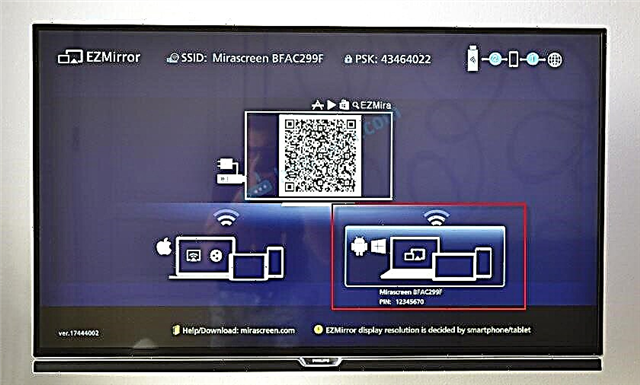
Depending on the version of Android, from the manufacturer of the phone / tablet, from the shell - the Miracast function can be called differently. "Wireless Display", "Smart View", just "Miracast". Look for an item in the menu, a button in the settings or in the control center. On my Samsung, this is the Smart View feature.
We launch the function and select our prefix. If a PIN request appears on your device, then it is indicated on the TV screen (I have it 12345670).

Everything is working. The phone screen is mirrored to the TV through the MiraScreen adapter.
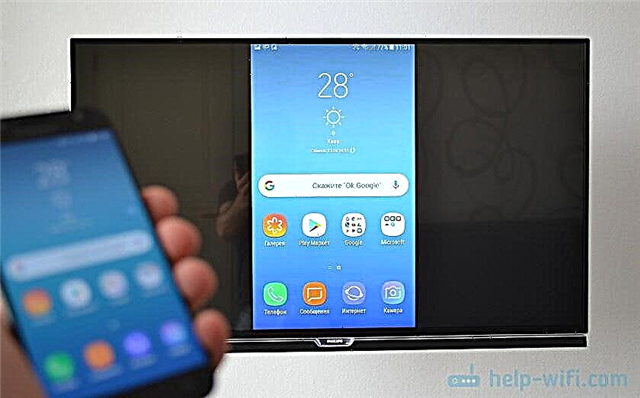
And so it works too.
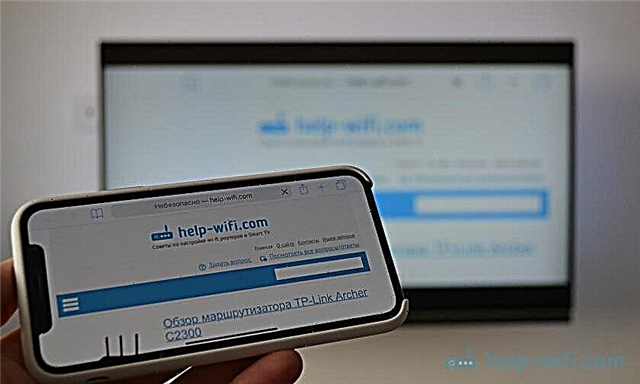
In the Miracast settings on Android, you can pause the broadcast, or turn it off. The sound is also transmitted to the TV.
Connecting a laptop / PC on Windows to a TV via MiraScreen or AnyCast
Windows 10 has a "Wireless Display" feature that allows you to connect to a TV (in our case, via an adapter) via Miracast. The same feature (just a built-in function) is available in Windows 8.1. In Windows 7, this is more difficult, special programs are needed there, etc.
I have a computer on Windows 10, so I'll show it using this system as an example. I already wrote a separate instruction about setting up the "Wireless Display" function: Wireless Miracast Display (WiDi) in Windows 10. It can be used without any problems to connect via an adapter.
The adapter itself must work in "Miracast" mode.

On the computer, press the Win + P key combination, then select "Connect to a wireless display" and select your adapter from the list of available devices.
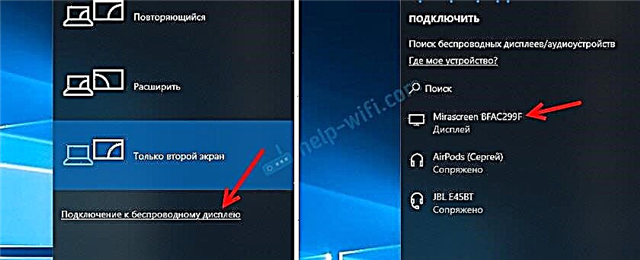
If you do not have the item "Connect to a wireless display", then see the article on the link above (about the "wireless display" function in Windows 10). The reason may be in the video card, Wi-Fi adapter, drivers. You need to check.
The desktop of our computer should appear on the TV.
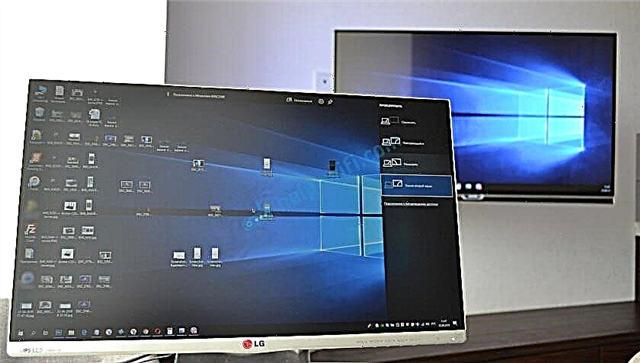
By default, it connects in "Extend" mode. But the mode can be changed through the Win + P menu after connecting. A small menu will appear on the screen with the settings for broadcasting the image to the wireless display.

The sound also goes to the TV along with the image. Everything works pretty well. But the quality and speed of the connection itself directly depends on the performance of the computer hardware and the quality of the MiraScreen adapter itself. If your TV has built-in Miracast, then it's better to connect directly, without an adapter. Latency in image transmission, freezing, lagging sound are common problems with such a connection. An HDMI cable will be more reliable.
Didn't seem to have forgotten anything. If anything, you can always write to me in the comments and supplement the article, share some useful information on this topic, or ask a question. In touch!


